What is sourdough starter and how do you make one? Sourdough starter is a natural leaven for bread using fermented flour and water. Naturally occurring wild yeast and bacteria metabolize the flour, ferment it and create the leaven for your baked goods. This is why we call it sourdough. It’s tangy and does amazing wonderful things to baked goods.
It’s extremely simple to make sourdough starter from scratch. All you need is flour, water and time. Follow the simple process in this recipe to create a healthy sourdough starter that will grow and bubble as it gets stronger.
How do you Make a Sourdough Starter?
To make an active sourdough starter from scratch combine flour and water as directed in this recipe. Over several days wild yeast in the flour and your kitchen will populate the batter and begin the magical process of fermentation. As the yeast consumes and breaks down the starches and sugars of the flour and water, a wild yeast sourdough starter is born.
Why Use Sourdough Starters to Make Bread?
Sourdough starters create baked breads and other recipes not possible with commercial yeasts. The flavors are deeply enhanced. You can make unique sourdough breads in your dutch oven that rival the finest bakery artisan sourdough breads in flavor, texture and variety.
It only requires a mixture of flour, water and time. With time the microbial action of the yeast and beneficial lactic acid bacteria ferment the flour and water to make a sourdough starter that will nurture your family for generations.
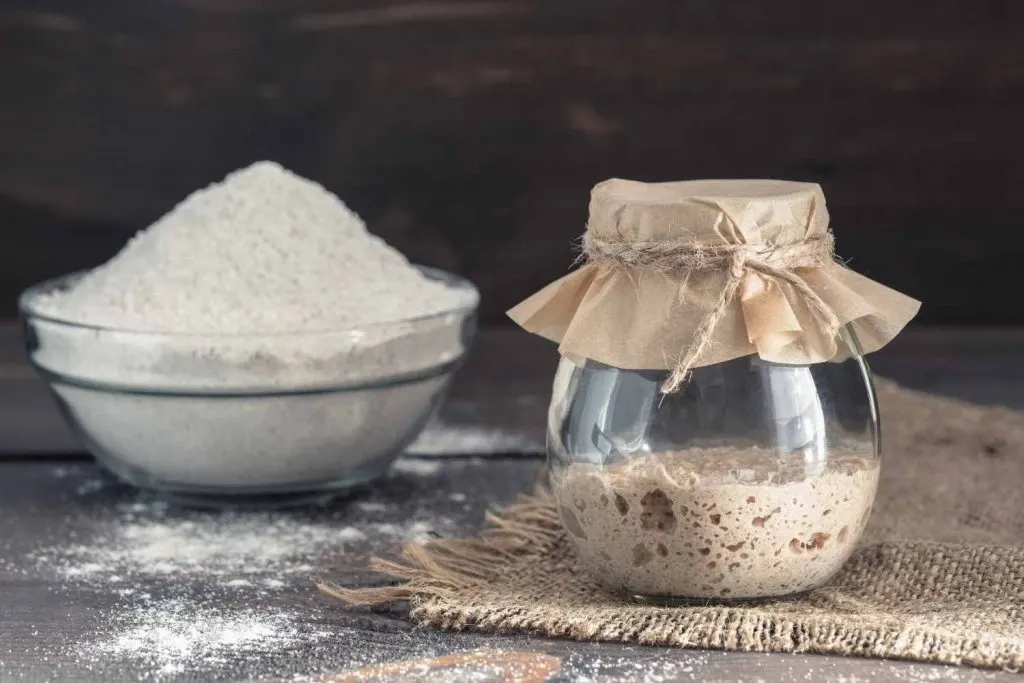
How Long Does It Take To Make a Starter for Sourdough?
It takes about two weeks for a sourdough starter to be ready for bread baking. Natural yeasts take time to populate and ferment the starter and make it active.
When your starter is strong enough to float in water it is ready for a test bake. But new starters will not raise bread as well as older starters. Expect your bread rise to improve as the starter ages.
What do I do with discarded sourdough?
Discarding an expensive flour mixture is painful. But you have to discard as directed in this recipe to get a starter active. You can throw it out or use it in some of our discard recipes that need no rise.
Before it is strong enough to raise bread, you can use sourdough starter in its less active stages for sourdough waffles, pancakes, cookies and other sourdough recipes.
Search our sourdough section to find recipes you’ll enjoy that make use of the weak, discarded starter.
As you get further into the process your starter will strengthen and so will the discard. This gives you even more sourdough recipe options for sourdough discard.
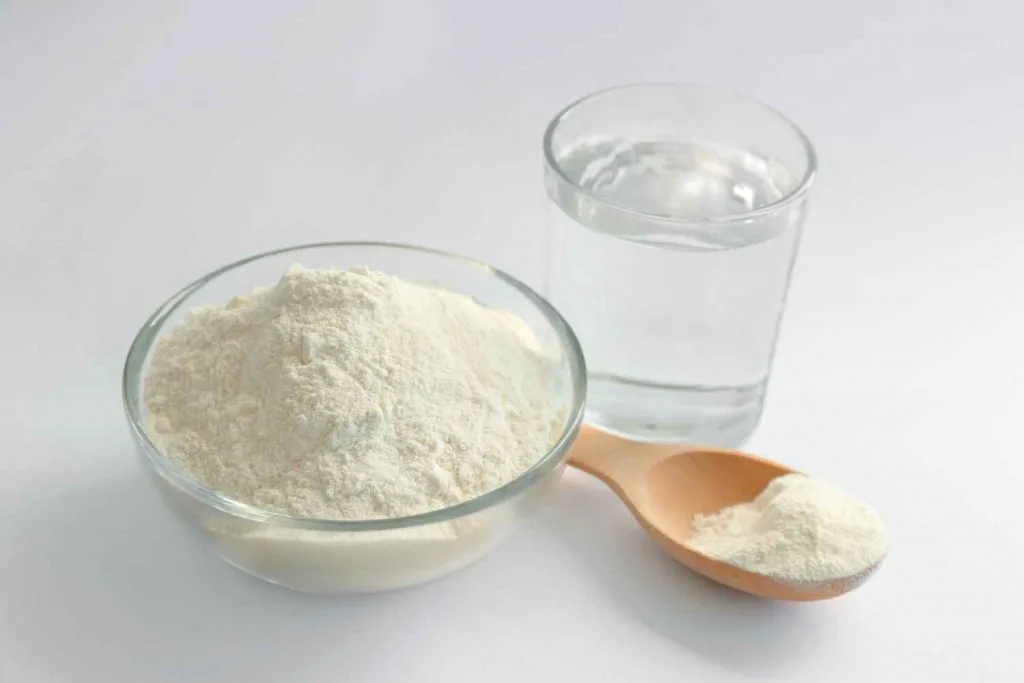
Wild Yeast is Different From Domestic Yeast-This Matters to Sourdough
What is Wild Yeast?
Wild yeasts are tiny single celled fungi. These micro organisms float freely in our air and all through nature. They add enhanced texture and flavor to baked goods.
How does yeast raise bread? Yeasts metabolize the sugars and starches in flour. As yeasts work they develop and strengthen the gluten structure of the dough. Yeasts excrete carbon dioxide (trapped as bubbles) and ethyl alcohols into the bread dough.
You can see plenty of bubbles in an active starter. And when a starter is hungry it smells of alcohol.
The carbon dioxide bubbles strengthen the gluten structure they help create. When yeasts warm, they eat faster and create more bubbles to be trapped in the dough. This is what is happening when you see bread raise.
When we bake a loaf of bread the yeast growth is very fast in a hot oven until they get too hot and die. This is how we get the risen bread structure.
What is Domestic Yeast?
Domestic yeast is what we buy dried in the store in packets. The Domestic commercial yeast strain we know as dry active or instant yeast is Saccharomyces cerevisiae.
It’s a mild yeast with consistent properties for a mild yeasty bread flavor, it gives a fast dough rising and even dough texture. commercial yeasts are simple to use and store neatly in ‘set it and forget it’ packets in our cupboard or freezer until we need them.
Active dry yeast is not necessary to make a sourdough starter. Spiking the starter with commercial yeast will get it growing faster…but. For sourdough, you want the flavor only wild yeasts can offer in combination with wild bacteria called Lactobacilli .
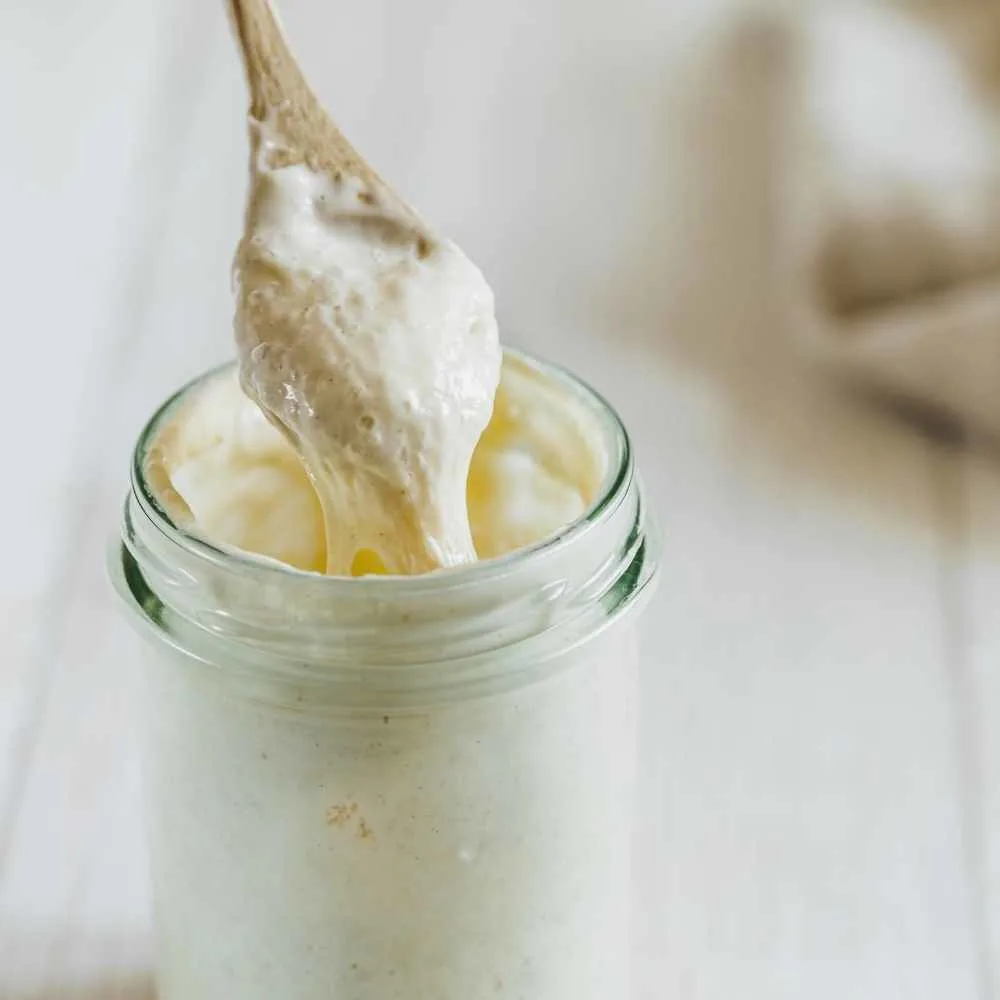
Why is Natural Yeast Best for Sourdough?
Homemade sourdough starters with wild yeast is best for artisan hearth breads. Breads made with wild yeast strains are diverse, robust and complex in flavor. Beneficial lactic acid bacteria are also at play in providing flavors as this microbial brew breaks down the sugars and starches available to them..
Wild yeasts create the bread structure and work together with the bacteria to bring out that delicious sourdough flavor in the breads we all enjoy.
This simple wild yeast starter recipe gives you the basic starter you need to bake truly elegant sourdough loaves at home with complex flavors.
What Type of Flour is Best For Sourdough Starter?
Any flour with a gluten content will ferment and make a sourdough starter. Unbleached All purpose flours work fine for building a new starter. They provide consistent results and are cheaper. However, You can also build entire starters on rye, einkorn, or whole wheat flours.
If your starter is weak and needs a boost, use a whole grain flour or rye flour for a feeding or two.
You can change the flour you use to feed your starter. As we discussed above this is often desirable when your starter is weak and needs a boost of enzyme action from whole wheat or rye to wake it up.
Can You make Sourdough Starter With a Gluten Free Flour?
Sourdough starters can be made gluten free. You will need a proper gluten free flour for this purpose. King Arthur Flours has the flour and the recipe for gluten free sourdough starter.
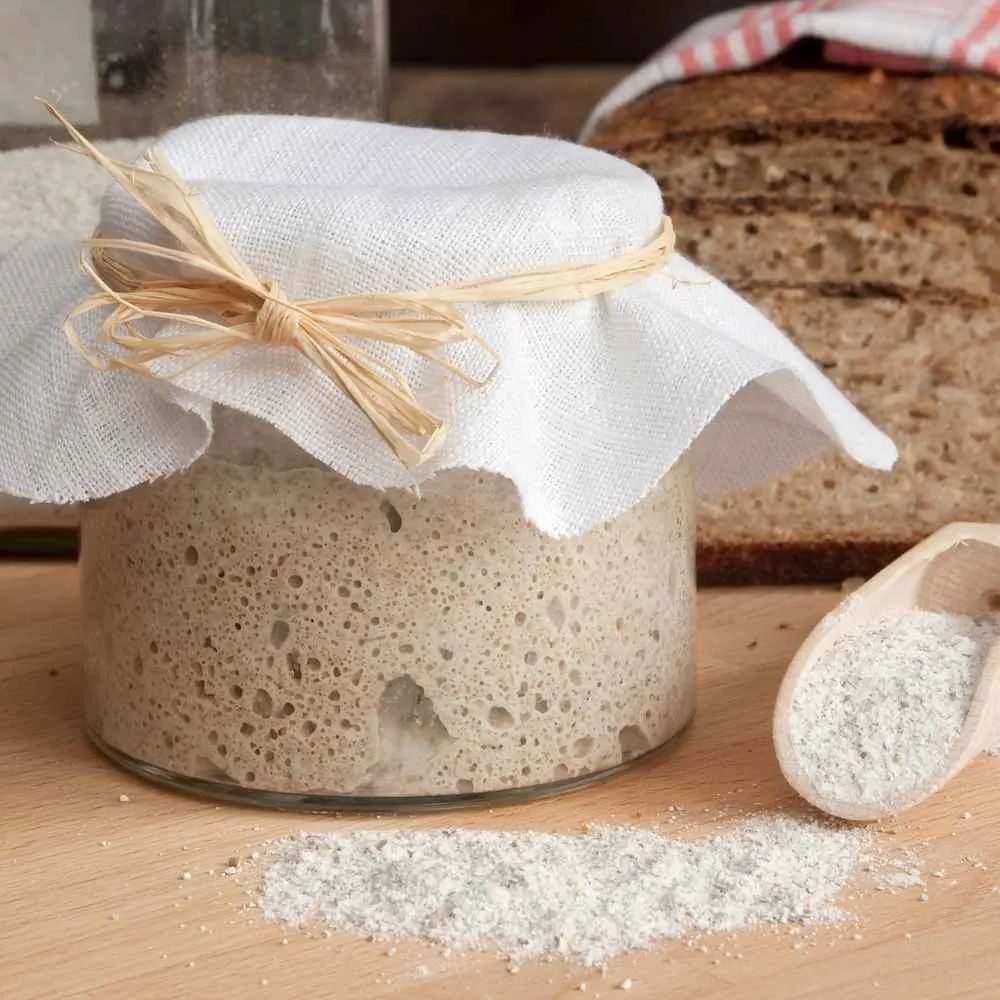
Sourdough Breads Need High Protein Flours and Strong Starters:
Any good quality flour with a protein content of 12 % or better will work well in most sourdough bread recipes with a strong starter.
The flour you use in the bread recipe is important. The starter yeasts metabolize the protein in your bread flour to create the structure of your bread and feed the fermentation process bacteria use to create sourdough flavor. A good quality high protein flour enables yeast to build a good bread scaffold and rise the dough well.
High protein all purpose white flour can work well for sourdough bread recipes. I often use Montana brand all purpose flour with 5 grams of protein. It’s usually available at Walmart.
Stay FAR away from gold metal and other flours that have only 3 grams of protein. They will not work well for sourdough breads. I have used 4 gram flours with a very strong starters with success. But with a young starter and new sourdough baker, use a high protein flour.
Eventually, when you get more experience, you can blend your own flour blends. you can even grind your own flours if you wish and create for yourself breads truly unique and beautiful.
But that is only a tiny beginning to sourdough breads. Sprouted grains, diverse flours and all the different methods of baking sourdough make it a satisfying creative hobby.
Make a wonderful sourdough whole wheat loaf from your home ground wheat flour. Rye breads, Oatmeal blends, Einkorn flours, and white wheat berry flours make great artisan breads. Make them with or without add ins of fruits, nuts cheeses, berries lots more.
Also, a whole host of other baked good are in your future. It all begins here with a good sourdough starter.
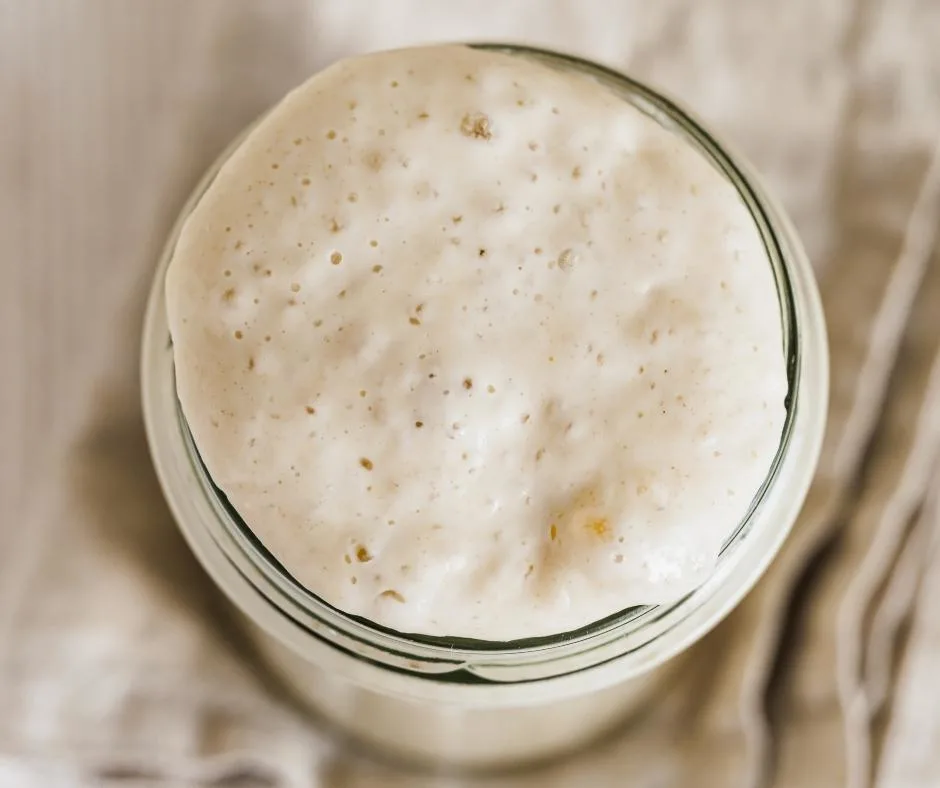
Sourdough Bread Recipes for Wild yeast Starter:
Once you create a strong starter try some of these sourdough breads. You are going to love what your can do with this basic sourdough starter.
Here are some of our simple sourdough bread recipes. This is just a taste of what you can do with your fully active sourdough starter.
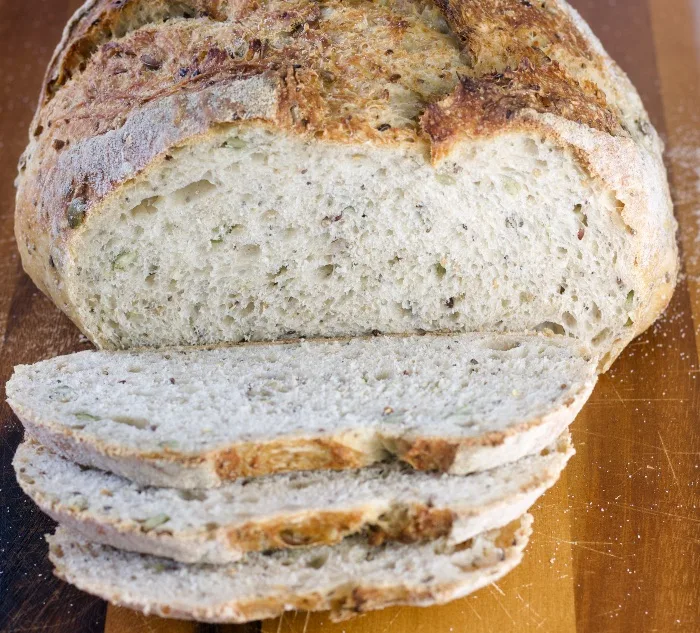
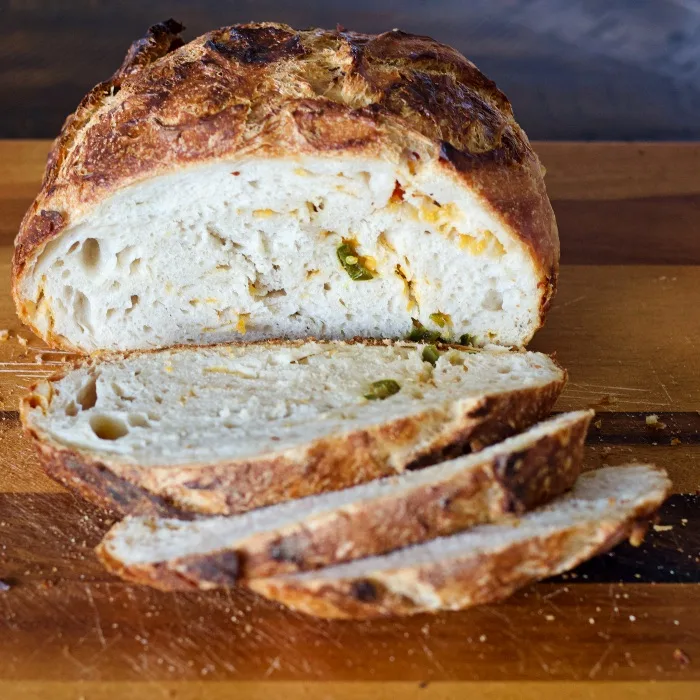
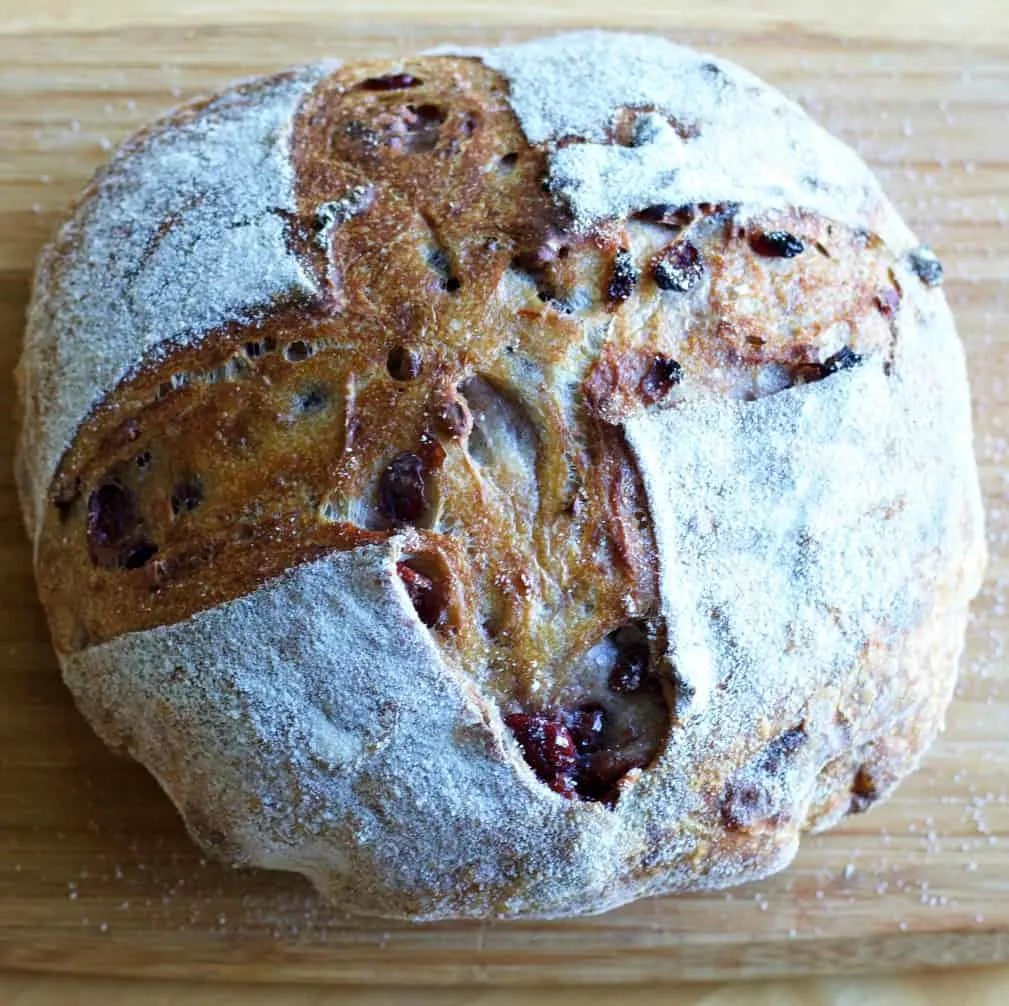
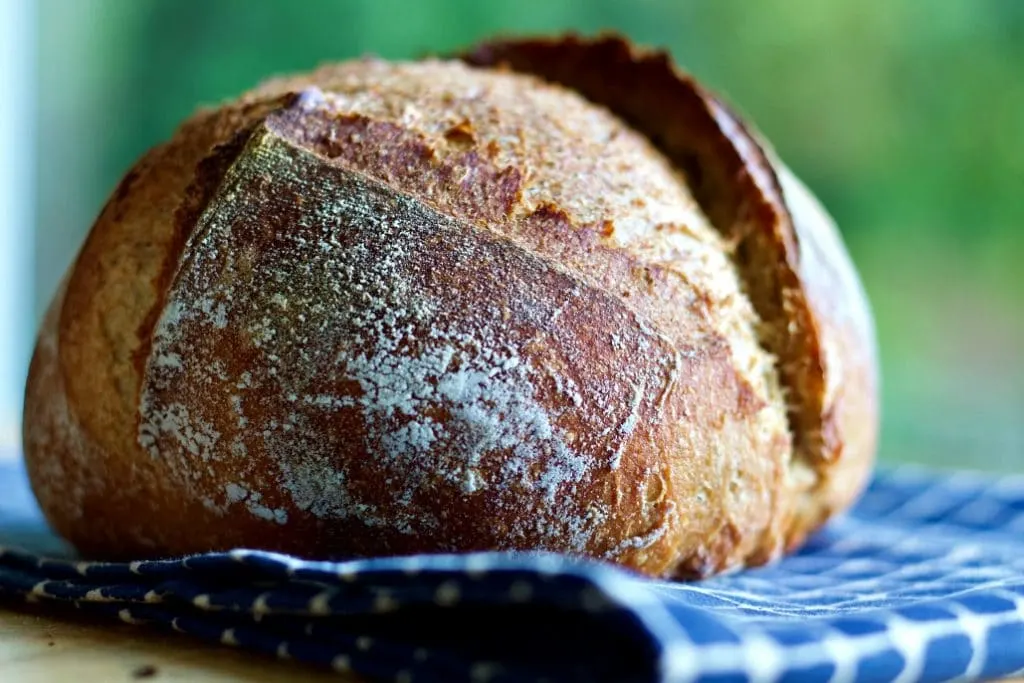
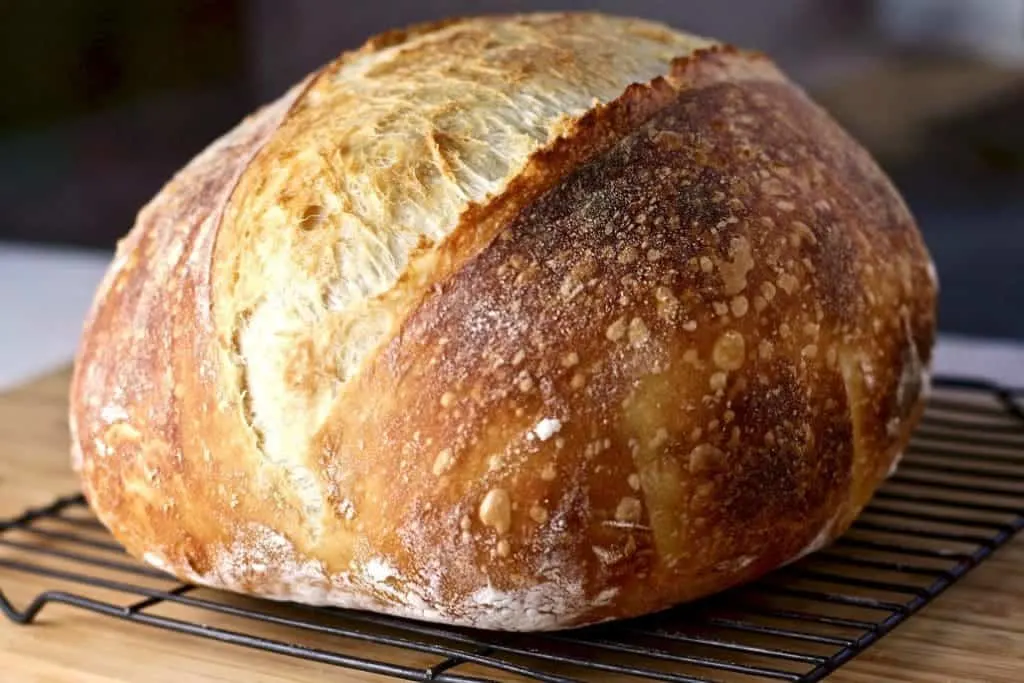
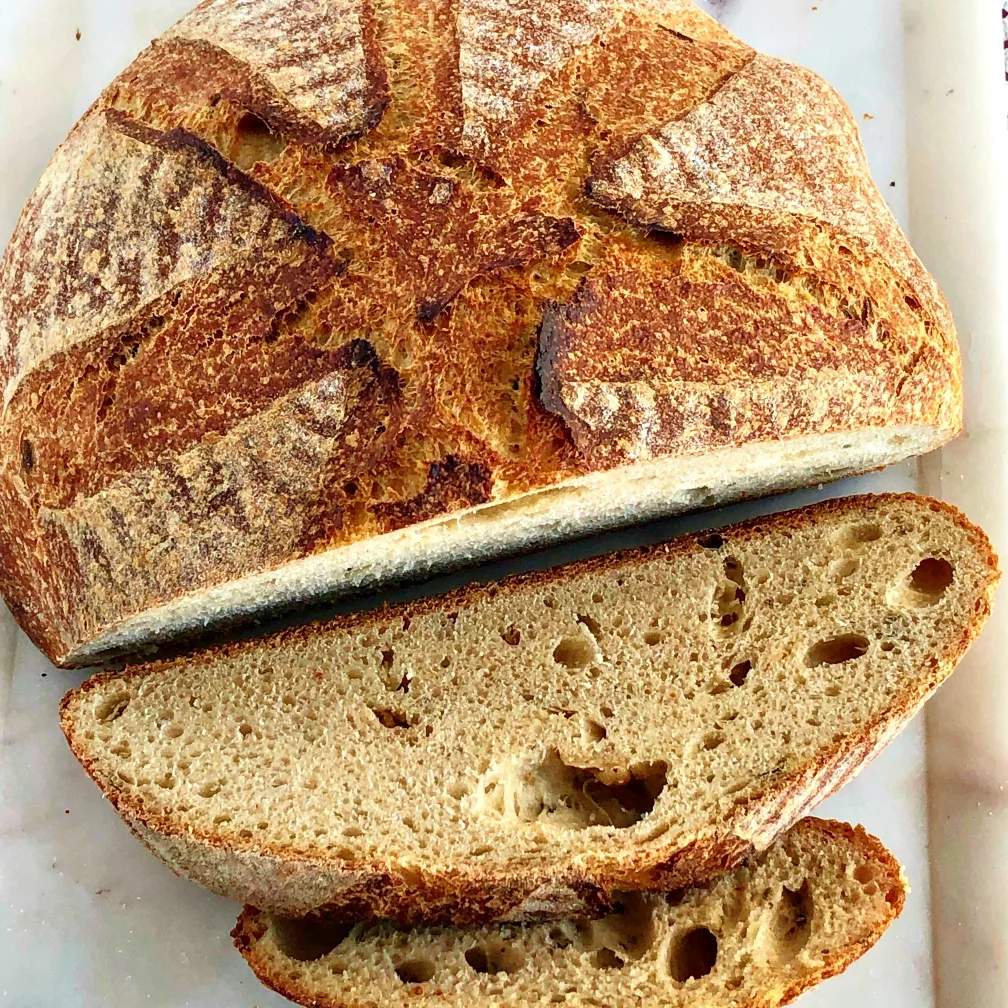
Sourdough bread baking is very simple. But the subject of sourdough is deeply complex due to the science and history of this ancient method of bread baking.
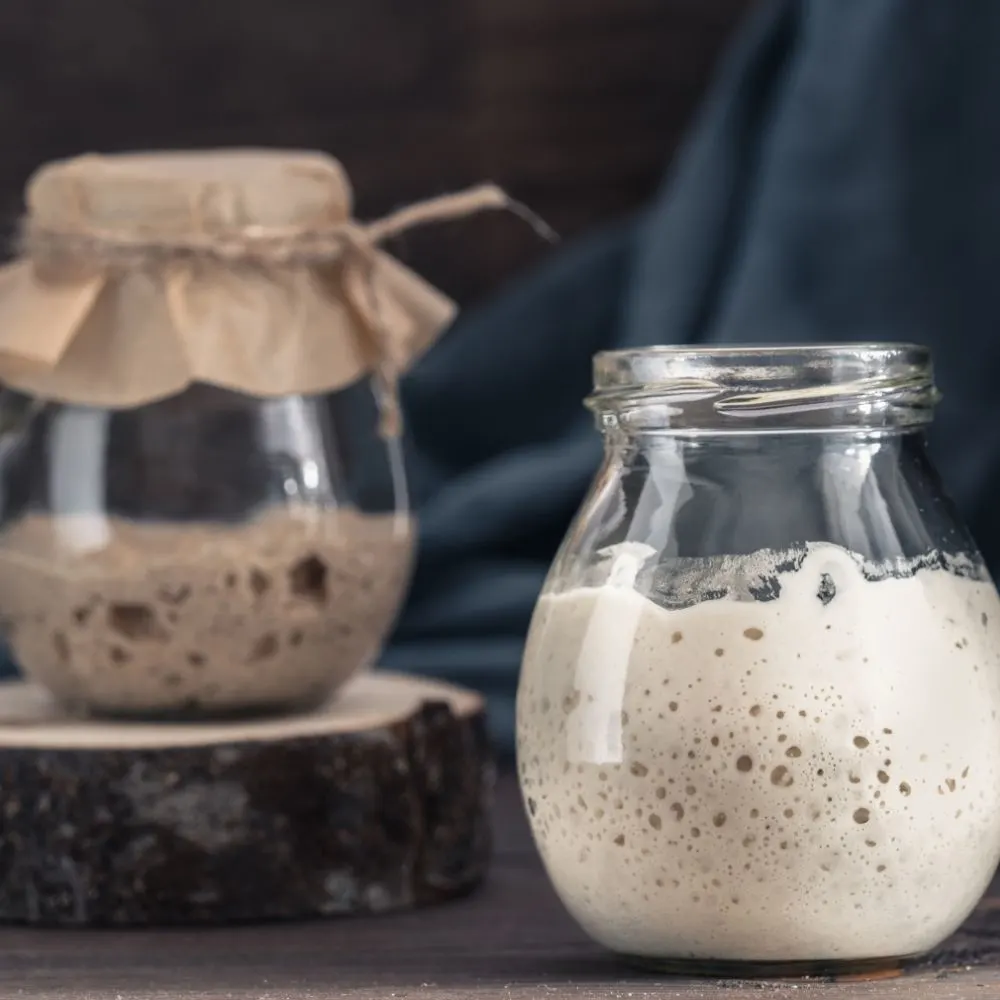
Do Sourdough Starters Get Better with Age?
Sourdough starters do get better with age. If they are well maintained starters get stronger and provide your baked goods with better structure and flavor as they age.
Heirloom sourdough starters are passed down through the generations in some families. Some starters are hundreds of years old and still baking good bread today.
You are creating a live growing, long term kitchen companion when you make a sourdough starter. Some people name their starters and enjoy playing around with adding different ingredients to ferment in with them. Apples and potato water are both popular.
Do this recipe as stated before you start playing around with it for best results!
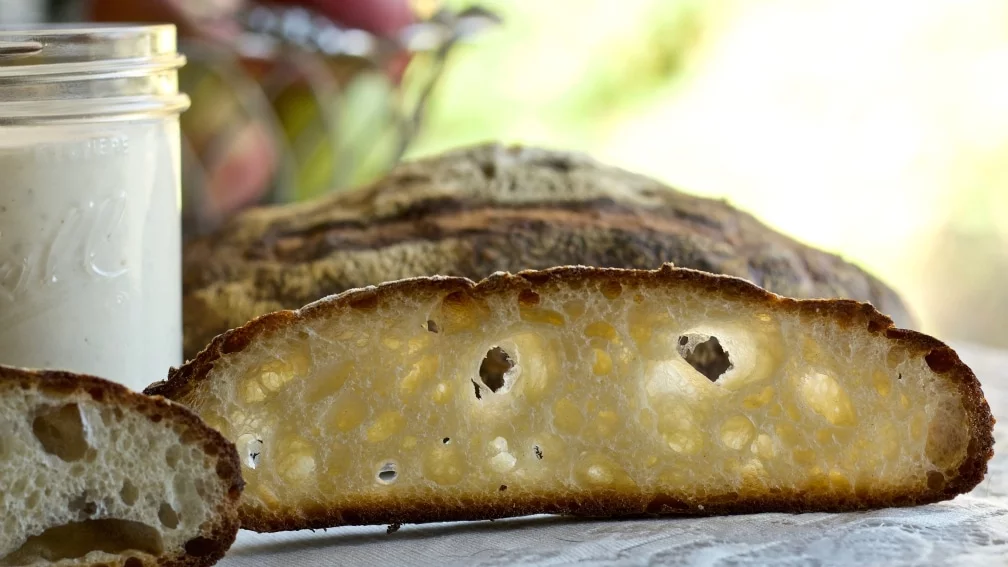
Can you Dry Out Sourdough Starter?
Sourdough starter dries out in the air quickly. You can spread the starter in a thin layer on parchment paper and let it dry. You won’t need much. Even a couple of tablespoons of dried starter can be revived into useable starter.
Can You Freeze Sourdough Starter?
Store dried starter in your freezer in labeled bags with all the air sucked out to save it for a year or more. It’s a good idea to save some of your starter in a freezer in case your active starter is spoiled.
Adding commercial yeast to a starter will get it growing faster…but. For the best flavor I recommend the old fashioned method. People have been baking bread this way for thousands of years.
Artisan bakers know and use this method because the flavor and texture of the breads they make with wild yeast starter is superb. All you need is good flour and water, a clean container and a sort of warmish spot for the container to sit for a week or so.
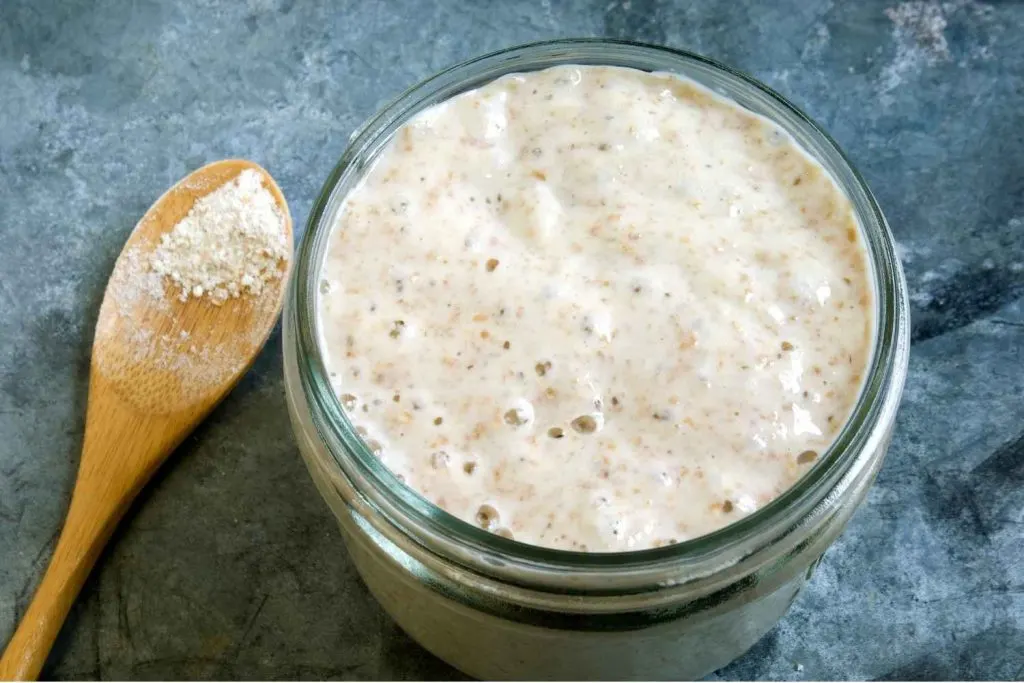
Wild Yeast Sourdough Starter:
Starters with natural yeasts are a marriage of local wild yeasts and beneficial bacteria from our home environment.
TIPS For Making Sourdough Starter:
- Use a quart glass jar container or something about that size in either plastic or glass (Mason jars work great).
- For best results please use a kitchen scale to weigh your ingredients for your starter.
- Feed your starter everyday at least once at the same time of day to keep the feedings evenly fed.
- This recipe is for A 100% hydration starter. By weight you add equal amounts of water and flour.
- Use a regular all purpose flour for this recipe. This will save you money since the process uses a lot of flour that is discarded
- If you get to day four and see no small bubbles forming in your jar try using whole wheat or rye flour for a few feedings. High enzyme content in your flour will help boost the starter and get it going
- Make sure you keep the starter at room temperature (around 70 degrees F.) throughout the process. Too much heat or cold will inhibit the yeast growth or kill it.
- Discard sourdough leftover from making and nurturing your starter is less active and great for making sourdough and sourdough discard recipes.
- Making a sourdough starter is simple. Don’t panic and be patient. Those little bubbles will show up and grow all in good time.
- Your kitchen is not mine. Temperature, the yeasts in your home and other variables make each starter unique in how it grows. Trust the process.
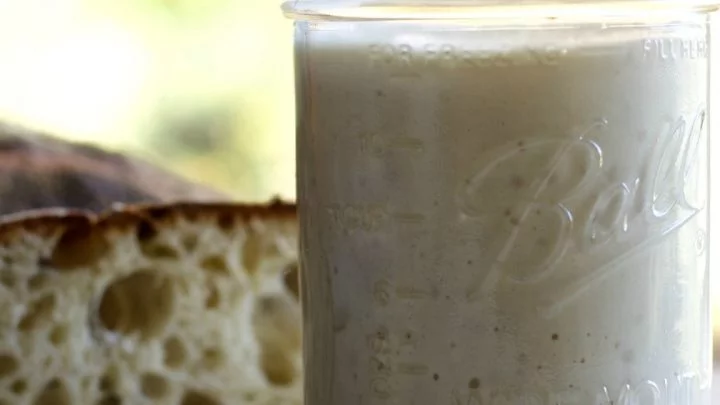
Sourdough Starter Recipe
A wild yeast sourdough starter collects the wild local yeast always found in your environment and flour and makes your own unique and flavorful starter. Once it gets bubbly you're all set to make the best sourdough recipes!
Ingredients
- 100 grams flour (1 cup of flour-4 ounces of flour)* see notes
- 100 grams lukewarm water, (1/2 Cup or 4 ounces of water)- avoid chlorinated tap water (Use chemical free bottled water if necessary)
Instructions
Tips for making a sourdough starter:
- Use a quart glass jar or a large plastic container. You will need a jar lid or Saran Wrap with a rubber band to tighten it over a jar. The plastic container should have a good air tight lid. You can also cover the container with a dampened tea towel.
- During the process of making the starter gases will expel from the container. Keep the lids loose enough to vent the gases but you need to cover the container or the starter will dry out too much.
- This is a 100% hydration starter.. By weight, you add equal amounts of water and flour. For best results please use a kitchen scale to weigh your ingredients for your starter. This is not strictly necessary for success, but most exact. You need to use the same ratio of flour to water for best results.
Day One:
- Combine the Flour and water in the container and mix well.
- Cover the container and allow to sit in a warm place (around 70 degrees F).
Day Two:
- Discard one half of your starter (about a 1/2 Cup).
- Feed your starter 100 grams of flour to 100 grams of warm water.
- Mix it together, cover and let sit 24 hours.
Day Three:
- You should see small bubbles appearing by now and the concoction will smell aromatic with a slight fruity aroma. This means wild yeast have found your mixture and are already working their magic.
- Feed your starter twice -12 hours apart- (or close as you can)
For EACH feeding: - Stir down the starter.
- Remove all but 100 grams of starter and discard it.
- Feed your starter 100 grams of flour and 100 grams of water.
- Cover loosely and let sit until next feeding.
Day Four:
- Discard all but 100 grams of starter and repeat your feeding of 100 grams each of flour and water.
- Stir, cover and let sit in a warm place.
Day Five to Seven:
By now you should see a bubbly starter with some action. The fermentation process is getting a good start.
Repeat feeding and discarding like day four.
- You should see the starter rising and falling about an inch on the jar as the day progresses.
- This means you have enough yeast they are visibly going through their lifecycle of eating and digesting the flour and water you feed them.
Day Eight to Fourteen:
- Do a dailly (or twice daily if your starter is not bubbling) feeding this way.
- Discard all but 100 grams of starter and repeat your feeding of 100 grams each of flour and water.
- Cover and let it sit.
- By day 14 your starter should double in size 8 to 12 hours after feeding at room temperature.
Tips to help Activate a Slow Starter:
If you do NOT see this rising and falling and bubbling action as expected. Try these tips:
- Repeat feeding every twelve hours as instructed in step four until your starter gets active.
- Try a warmer room and leave the container uncovered a bit to capture more yeasts.
- If you get to day seven and see no small bubbles forming in your jar try using whole wheat or rye flour for a few feedings. High enzyme content in these whole grain flours will help boost the starter and get it going.
Notes
*The ingredients listed are for one feeding. Repeat this process daily or twice daily as instructed. A ten pound bag of flour will get you through the process with flour to spare.
Day 5-7 look for these things:
The starter should be bubbled and webbed all the way through. It should have a distinct smell. Sort of sour and vinegary with a bit of alcohol headiness. It will get looser as it matures and the yeast eats the flour faster.
Continue to feed the starter daily to keep strengthening it. somewhere between day 7 and day 14 it should be getting strong enough to raise bread. The bread will not raise as well as it will after 30 days of strengthening but you are at the gates of success.
The final test of a starter is will it float?
Put a teaspoon of starter into a glass of room temperature water. If it floats, it's ready to use. If it sinks or almost floats. Feed it again and give it another day.
Maintain your starter:
Discard half of the starter everyday now and continue feeding it for 30 days. This will strengthen it and help you maintain an active starter. After the starter is reliably rising your breads well, you can reduce feedings to weekly. Just be sure to feed it 1:1:1 proportions before baking. We cover prepping your starter for baking in this post.
TO PREPARE A STARTER FOR BAKING:
- Once the starter is active and bubbling feed it this way to ready a starter for baking bread.
- You need EQUAL parts starter, High protein bread flour and water. Here's how I prep my starter.
- You can use smaller or larger amounts but keep the proportions 1:1:1.
- 8 to 12 hours before baking:
- In a quart sized bowl Mix together 100 grams starter (room temperature), 100 grams flour, 100 grams water (lukewarm)
- Loosely cover the bowl and set it in a warm place (70 degrees F).
- In 4 to 8 hours the starter should double in size and float in water at least 15 to 20 seconds without starting to dissolve.
Nutrition Information
Yield
16Serving Size
1Amount Per Serving Calories 23Total Fat 0gSaturated Fat 0gTrans Fat 0gUnsaturated Fat 0gCholesterol 0mgSodium 1mgCarbohydrates 5gFiber 0gSugar 0gProtein 1g
Follow Us:
We enjoy meeting you on our social networks. Follow us on Facebook, Pinterest, Instagram . Tag us with your pictures of our recipes and comment on how it went for you. We would love to see what you do with them.
We often like, comment and share your posts of our recipes on our daily Instagram stories.
Ask questions and rate the recipe in the comments section below. Please share what you did with this recipe. We are always looking for more and better ways to make homemade food. Other cooks love your ideas!
Recent Posts:
Can you Buy Ready Made Sourdough Starters?
You can buy ready made dried starters online from Etsy shops or Our baker friend Sasha linked below. These are fun to explore since they can be made in so many ways with ingredients like potato water and apple peelings.
If you are really lucky, someone will give you a piece of their starter to get you started. If it is already strong and active you just feed it and bake. Ask around your friend groups. You may be surprised who has a sourdough starter they will share or sell cheap.
RESOURCES:
If you are looking to buy sourdough starter rather than build your own CONTACT SASHA HUNTER. She sells her well established starter all over the U.S.
If you are looking for bread info and inspiration check out Karen Kers Bread Bakers and Artisan Bakers FB group
King Arthur website is full of AMAZING information and tips on all kinds of baking, including sourdough
Further Reading:
- The Bread Baker’s Apprentice by Peter Reinhart
- The NEW Healthy Bread in five minutes a day by Jeff Hertzberg & Zoe Francois
- Artisan Pizza and Flatbread in Five minutes a day By J Hertzberg & Zoe Francois
- Tartine Bread by Chad Robertson
- Tartine Book 3 By Chad Robertson
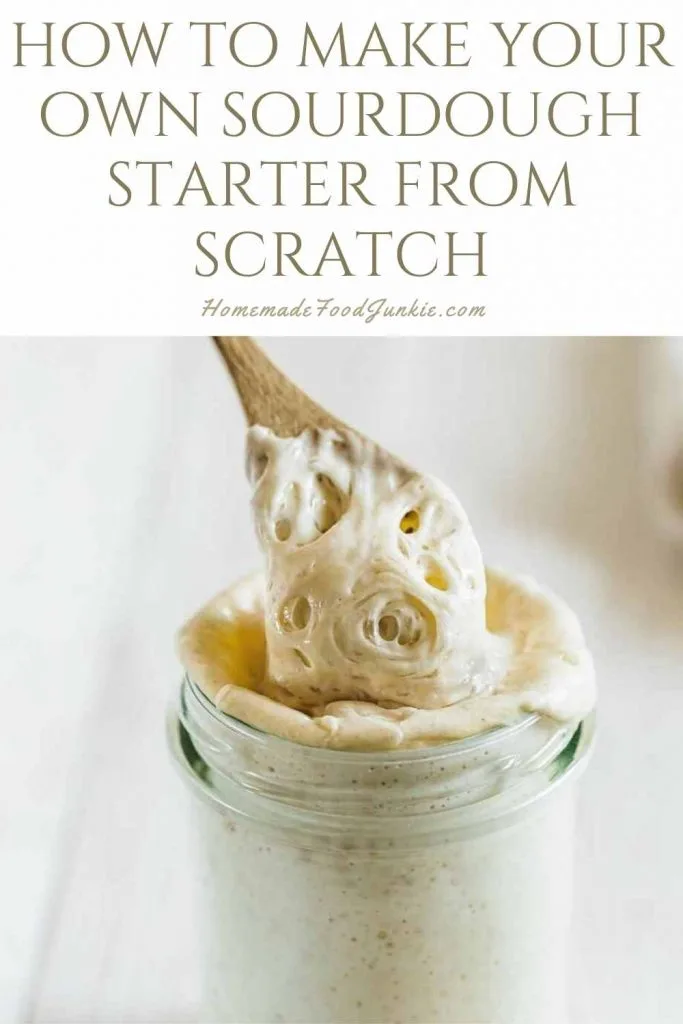

Lynn
Wednesday 24th of April 2024
I cannot eat wheat but can eat spelt. Can I use spelt or other flours in a sandwich loaf? And if so what flours would you recommend?
Diane
Wednesday 24th of April 2024
Hi Lynn,Yes, you can definitely use spelt or other alternative flours in a sandwich loaf if you cannot eat wheat. You can experiment with rice flour, almond flour, oat flour, chickpea flour, or a gluten-free flour blend. You might try blending some spelt into our sourdough Oat loaf recipe. If you enjoy almond flour start with that in this recipe. Ive had good luck with almond flour in baking but I'm not sure it will give you a good rise.
When substituting alternative flours in a sandwich loaf recipe, keep in mind you may need to adjust the quantities and other ingredients accordingly. For example, some gluten-free flours require binders like xanthan gum or guar gum to help the bread rise and hold together.
Im not a gluten free bread baker so I hope you have the experience to play around with these ideas. If you do develop a good loaf please let us know. Have a great day!
Vickie
Wednesday 7th of December 2022
Where should the starter be kept? In the fridge or counter? I live in a hot/humid climate (I never bake at all in the summer) and I have been keeping it in the fridge, but it’s not bubbling like it was in the beginning. I’m feeding it 1:1 (1/4cup) usually everyday right now and haven’t been discarding anything. When it gets to be to much starter, I make waffles and freeze. Also, I don’t want to have to bake bread too often, so what would be the best amounts to feed it? Discard how often? The maintenance of the starter is confusing to me.
Diane
Wednesday 7th of December 2022
Hi Vickie, If your starter floats in water after feeding it in 1:1:1 proportions, it should be strong enough to bake bread even if the bubbles are small. I keep my starter in the fridge unless I'm getting it ready for bread baking.if you put starter on the counter all the time, it will need a LOT of feedings to keep it from getting too hungry in a warm climate so fridge is best. I also do not bake weekly. I do try to feed my starter every week and use the discard for a recipe of some kind. Lately sourdough pizza is my 'go to' way to use up sourdough discard. Once your starter gets strong enough to bake bread with a decent amount of rise you don't need to be feeding it daily. If you want to hold your starter in the fridge without baking for a while try feeding it with 2 times the amount of flour to starter and water. This will give you a very thick batch with plenty of food to hold it for awhile. It will eventually lose strength if left unfed for several weeks to a month. Then you will feed it 1:1:1 again and let it sit on the counter 8 to 12 hours to strengthen it. You may have to repeat this again the next day if your starter is very weak. I hope this helps! Happy Holidays!
Sue
Monday 2nd of May 2022
Hello! I must be doing something wrong or misunderstanding something! I am in the process of making my first batch right now. So far, so good, except after I measured out the 200 grams of starter, I only had 60 grams left. Does this sound right? If so, do I feed it 60 grams of flour and water to maintain it? In that case, how do I grow it so that I have a larger amount of starter?
Sue
Wednesday 4th of May 2022
@Diane, I’ve read all of the above (and the bread I made yesterday came out wonderfully!) but let me rephrase my question if you don’t mind answering me again! If my starter doubles after following the instructions to balance it with 100 grams of each, and I then use it for my recipe, I have very little left. When I balance the starter in the last feeding before baking, can I use 200 grams of each instead of 100 so that I have more left to maintain my starter after I remove the amount needed for my recipe? Hope that makes sense…I don’t want to run out!
Diane
Monday 2nd of May 2022
Hi Sue, What you are telling me is perfectly correct. No worries. Yes, do feed and stir the remaining starter. Watch the video on the process too for further help with growing your own starter. I don't know which day of the process you are on. Let me say if you follow the recipe exactly it will normally work as stated. I'm sorry if it is confusing you. Your kitchen temperatures, the amount of yeasts in the flour (completely unpredictable) and your kitchen will all come into play on how this works out for you. But it will work. Wild yeast is everywhere. Your starter may not grow as fast initially and that is probably throwing you off. Just keep feeding and discarding until it gets stronger and begins to grow during feedings. All the best! PS: For more on feeding and maintaining a starter this post will help you</a
Pat Martin
Wednesday 3rd of March 2021
Hi Diane, I had a sourdough starter years ago that I got from I don’t know where. I was brand new to bread baking even, but adventurous. I had it literally for years but it finally passed away from months of neglect. I had tried again but with limited success. I even ordered one from King Arthur. Now that I’m retired with more time, I’m trying again. This time I decided to some of the kombucha tea I’m experimenting with. It took right off as you can imagine. I’ve been playing with it and feeding it daily, all be it not the same time everyday for about 2 weeks now. It’s bubbly, smells great but does not float, and doesn’t seem to double in volume. I Made a test loaf that was pretty good, I’ve made delicious English muffins and pancakes with the discard but I tried your raisin cinnamon bread with freshly fed starter, after about 3-4 hours and it doesn’t rise well and has no oven rise. 😩. Any suggestions?
Diane
Wednesday 3rd of March 2021
Hi Pat, How Interesting that you tried it with kombucha! I think you're halfway there. Try feeding the starter 1:1:1 (equal amounts of flour, starter and water)the night before you try to bake bread with it next time.
I just wrote a whole post on how to maintain, feed and balance your starter for bread baking. This is a common problem. Once we get a lively starter it is important to feed it for the intended purpose. Starters tend to go out of balance so this is how I always feed when I'm getting ready for bread baking.
Let me know how it goes for you! All the best.
Monica
Sunday 26th of July 2020
I think a common theme with people asking about the float test, and people saying theirs doesn't float is that it should be mentioned that the float test should be done when the starter is at it's "peak" after feeding. I didn't realize that when I first started and kept testing mine just before I'd feed it, I went nearly 2 weeks of feeding and testing at the wrong time. It matters a lot that it's at its highest and not just any old time. Just the same as when it's used, it needs to have been fed recently for most recipes.
Diane
Sunday 26th of July 2020
Hi Monica, Thanks for adding this tips for our bakers. Have a great weekend!